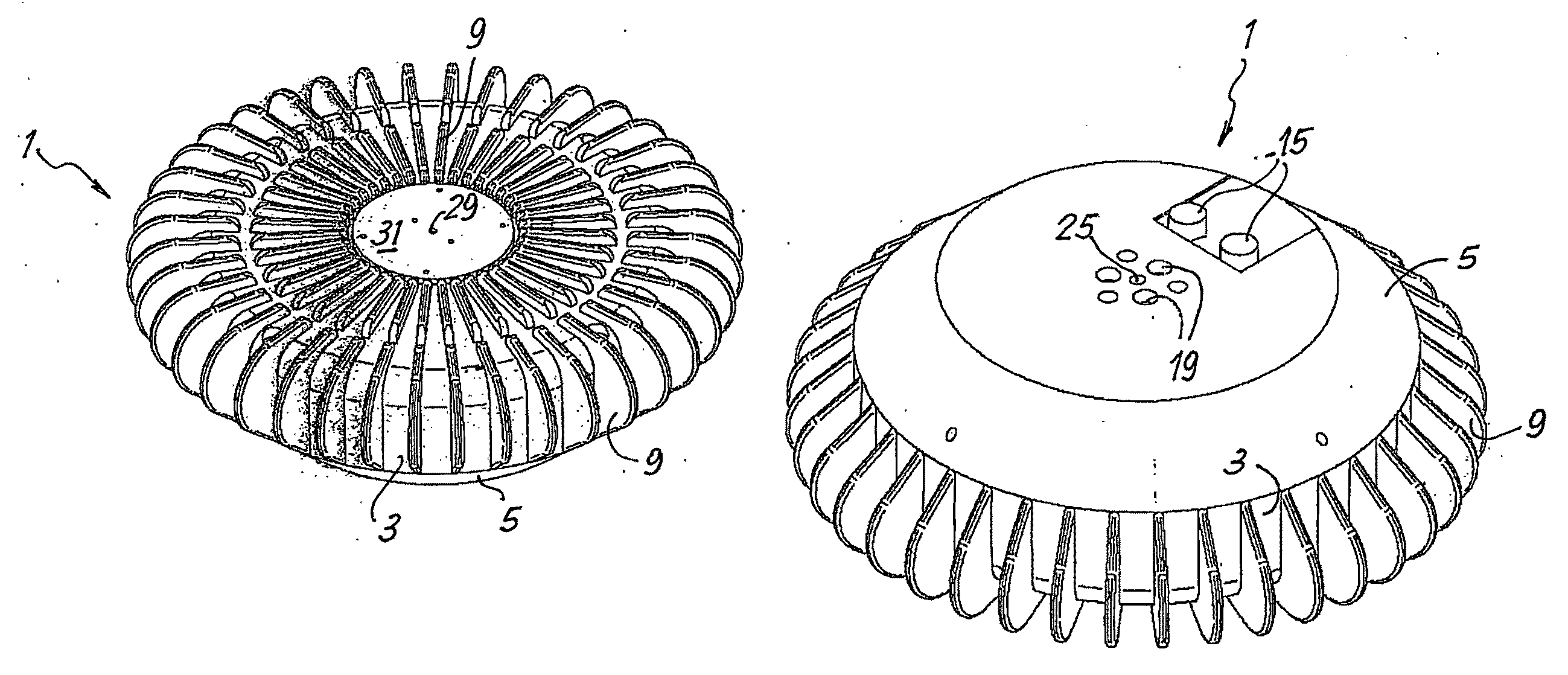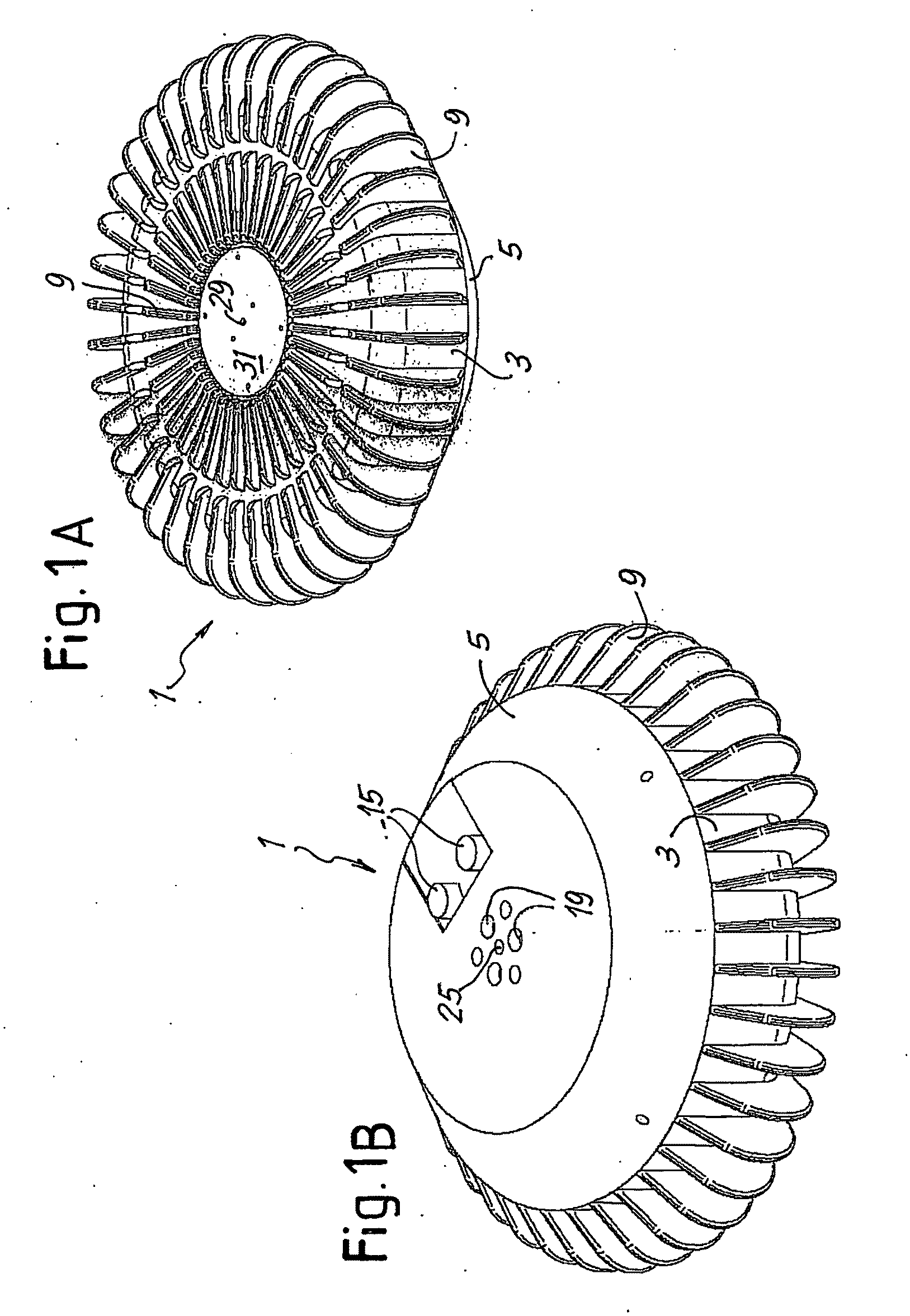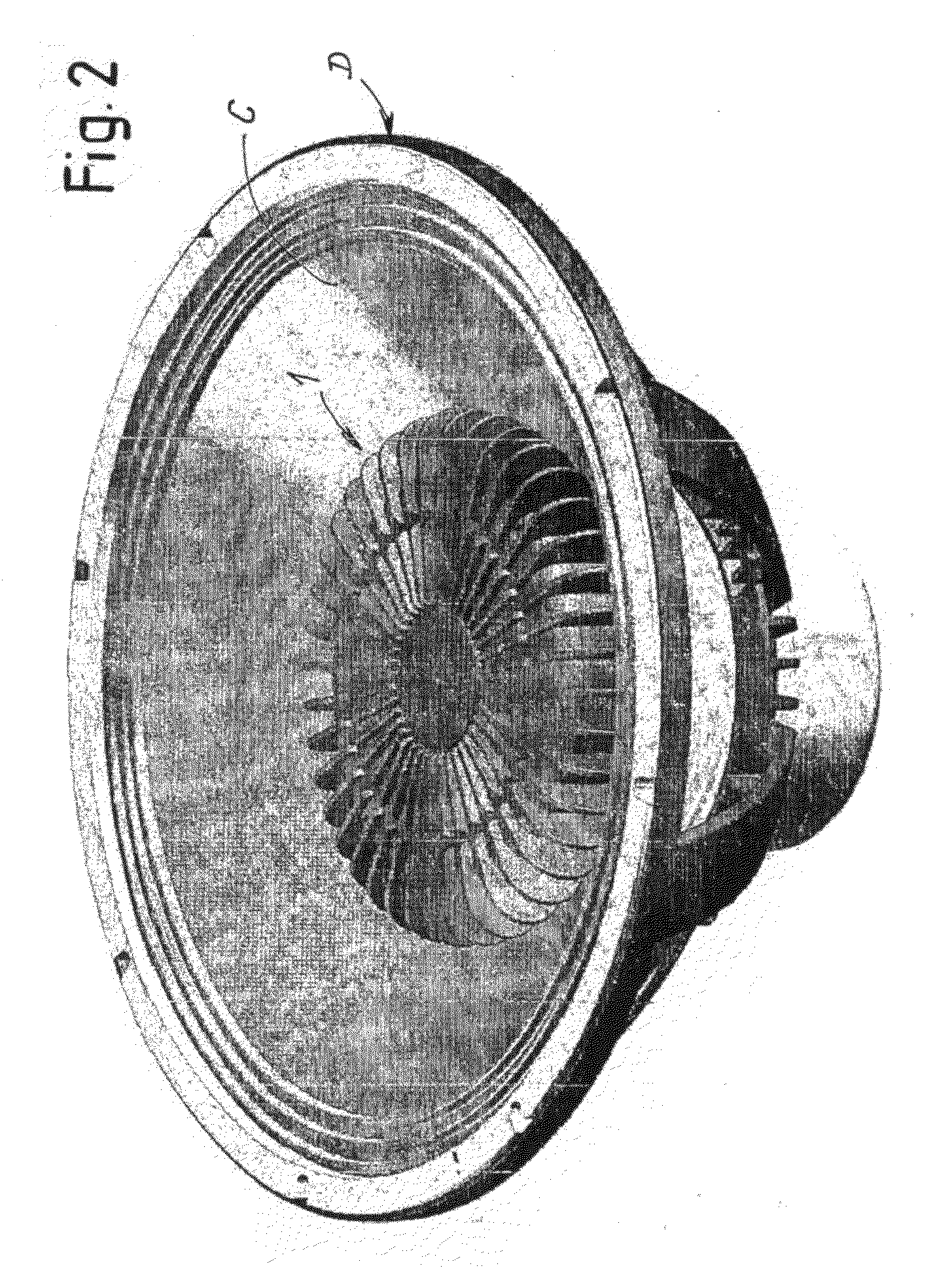To systems for acoustic diffusion
a technology for acoustic diffusion and systems, applied in the direction of transducer circuits, transducer casings/cabinets/supports, transducer circuit damping, etc., can solve the problems of loss of efficiency, loss of efficiency of transducers, and maximum dissipation of amplification devices, etc., to achieve simple and practical installation
- Summary
- Abstract
- Description
- Claims
- Application Information
AI Technical Summary
Benefits of technology
Problems solved by technology
Method used
Image
Examples
Embodiment Construction
[0043]With initial reference to FIGS. 1 to 5, the structure of the amplifying and processing unit associated to an acoustic transducer and the modalities of application to the transducer will first be described. The unit is designated as a whole by 1 and, according to an advantageous embodiment, is applied within the hollow conical space delimited by the mobile diaphragm or cone C of an acoustic diffuser D.
[0044]The unit 1 is enclosed within a housing or container delimited by a front shell 3 and by a rear shell 5, joined to one another (FIG. 4) by means of screws 7 provided, in adequate number, for example four, around the perimetral development of the container 3, 5. The container has a substantially axisymmetrical development, and the axis of symmetry is designated by A-A. Arranged on the front shell 3 are cooling fins 9, which have a radial development with respect to the axis A-A. The fins 9 have the purpose of dissipating the heat generated by the electronic components, especi...
PUM
 Login to View More
Login to View More Abstract
Description
Claims
Application Information
 Login to View More
Login to View More - R&D
- Intellectual Property
- Life Sciences
- Materials
- Tech Scout
- Unparalleled Data Quality
- Higher Quality Content
- 60% Fewer Hallucinations
Browse by: Latest US Patents, China's latest patents, Technical Efficacy Thesaurus, Application Domain, Technology Topic, Popular Technical Reports.
© 2025 PatSnap. All rights reserved.Legal|Privacy policy|Modern Slavery Act Transparency Statement|Sitemap|About US| Contact US: help@patsnap.com



